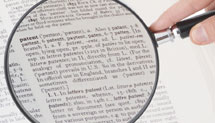| Skip to content | |||||
 |
|
||||
|
|
 |
||||||||||||||||||||||
|
|
The IPP Office and Goddard’s Office of Patent Counsel work together to ensure that the many innovations developed for the space program are appropriately protected from unauthorized use. Patenting NASA’s novel, innovative, and useful IP allows for the generation of royalties through out-licensing to commercial entities. More importantly, however, it allows Goddard to offer its partners unique access to NASA’s cutting-edge technologies as well as the innovators who developed them. In FY06, the U.S. Patent and Trademark Office (USPTO) issued six patents for Goddard-developed technologies:
Two types of patent applications can be filed with the USPTO: provisional and nonprovisional applications. A full, nonprovisional patent application is a relatively complicated document to prepare with a significant filing fee, while provisional applications are less complicated to prepare and give the applicant an additional year to file the full application without compromising its IP protection rights. In FY06, Goddard’s Office of Patent Counsel filed 23 nonprovisional and 15 provisional patent applications. The resulting additions of IP-protected innovations to Goddard’s technology portfolio are as follows:
* Link opens a new browser window.
|
||||||||||||||||||||||
|
|||||||||||||||||||||||

